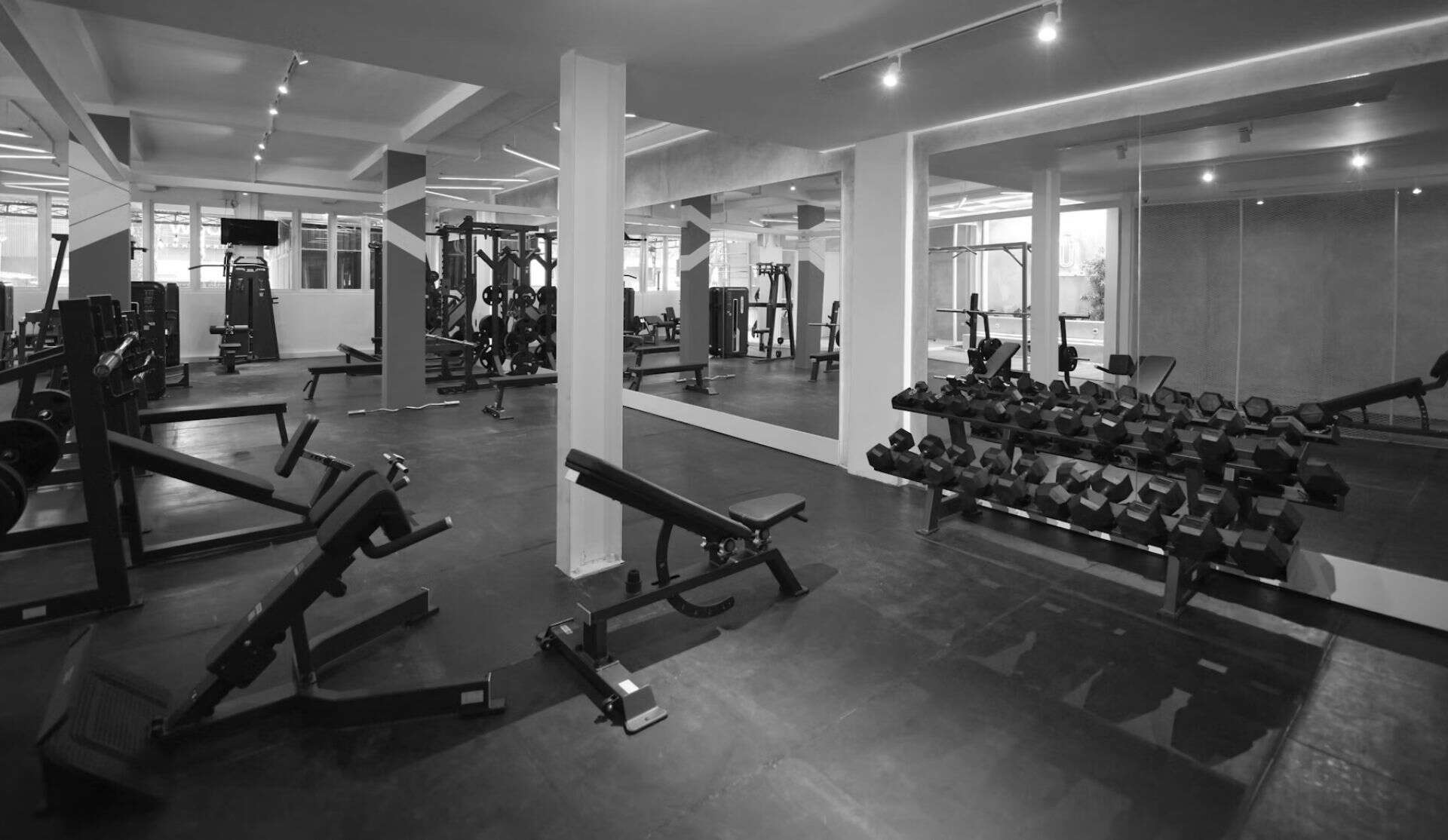Join 2,000+ gyms that trust
CloudGymManager




Sustainability is no longer just a trend in the fitness industry. Members today expect the gyms they join to reflect their values and commitment to the planet. At the same time, sustainable operations can save gym owners thousands of dollars every year. Reducing energy consumption, improving facility efficiency, and cutting waste are now practical strategies that lower costs while helping gyms appeal to environmentally conscious members.
Many fitness facilities already deal with high monthly operating expenses from lighting, heating, cooling, equipment usage, and cleaning supplies. This makes gyms ideal candidates for sustainability measures that directly reduce utility bills and increase operational efficiency. When implemented strategically, eco friendly practices enhance the training environment, improve brand image, and create a safer and healthier space for both members and staff.
Sustainable gyms stand out in a competitive industry. They attract members who care about responsible business practices and are willing to support brands that make an effort toward environmental responsibility. Younger demographics especially prioritize sustainability and seek gyms that align with their lifestyles. This unique positioning strengthens loyalty and adds another dimension to member retention.
One of the fastest and most cost effective ways to transform sustainability is to address the building’s energy consumption. Fitness facilities consume a large amount of electricity through lighting, HVAC systems, hot water, and cardio equipment. Small changes in this area create measurable reductions in monthly utility bills.
LED lighting is a simple upgrade that reduces electricity usage by 40 to 60 percent compared to fluorescent bulbs. Gyms with large floor areas or tall ceilings see even greater savings. Smart or programmable thermostats allow owners to control HVAC systems more efficiently, reducing heating and cooling usage by 20 to 30 percent. Larger fitness centers often benefit from smart HVAC systems that adjust indoor temperatures based on operational hours and occupancy.
Solar panels are another option for long term sustainability. While they require an upfront investment, many facilities recover the cost through tax incentives and lower energy bills within a few years. Cardio machines are also becoming energy efficient. Some even generate power during workouts, allowing gyms to reduce or offset energy usage.
These improvements reduce operational expenses and make facilities more comfortable for members. A cooler indoor environment during busy hours and better air circulation contribute to better workouts and improved air quality. When owners track utility usage before and after upgrades, the results often show clear financial benefits alongside environmental advantages.
Gyms produce a high volume of waste from cleaning supplies, paper towels, plastic bottles, and disposable items. Reducing waste is one of the easiest sustainability initiatives with immediate impact. Swapping disposable cleaning supplies for reusable microfiber towels and eco friendly detergents is a simple change that lowers waste and reduces long term supply costs.
Water consumption is another key area for improvement. Installing low flow showerheads and faucets reduces water usage without compromising member experience. Many gyms also choose to eliminate single use plastic bottles by installing filtered hydration stations. Members appreciate these efforts as they align with growing awareness about plastic waste.
Eco friendly cleaning products improve indoor air quality and reduce exposure to harsh chemicals. These supplies are safer for members with allergies and sensitivities, improving accessibility for older adults and health focused clients. Recycling bins, towel programs, and digital check ins reduce paper consumption. Each of these practices saves money and reinforces responsible operations.
Waste reduction initiatives often start small but lead to significant long term transformation. The key is consistency and clear communication with staff and members so that sustainable habits become part of daily operations.

Sustainability has become a strong differentiator in the fitness market. Members do not want generic messaging or vague commitments. They want to see real action and measurable improvements. Gyms can use sustainability initiatives to strengthen communication and build a deeper relationship with members who care about environmental responsibility.
Younger generations especially value sustainability in everyday choices. Studies show that over 70 percent of Gen Z and Millennials consider environmental policies when choosing brands. They are willing to pay premiums for eco friendly facilities and are highly vocal about the importance of sustainability. These demographics also share their experiences online, which can increase visibility and positive reputation.
Highlighting eco friendly practices in marketing materials, signage, and member communications helps build trust. Clear messages about environmental goals, energy usage reductions, and waste reduction efforts inspire loyalty. Gyms do not need to present themselves as perfect. Transparency about steps taken and plans for future improvements resonates more than idealistic claims.
Management platforms like CloudGymManager help track costs and sustainability metrics that gyms can share in communications. Reporting improvements clearly strengthens credibility and positions the business as committed to long term environmental responsibility.

The equipment inside a gym provides a major opportunity to reduce environmental impact. Cardio machines consume the most electricity in a facility. Switching to energy efficient or self powered machines reduces consumption and operating costs. Strength equipment typically lasts longer and requires less power, but it still benefits from planned replacement and maintenance to avoid waste.
Certain brands offer equipment that generates power during workouts. Even if a gym does not switch entirely to energy generating machines, replacing aging treadmills, ellipticals, and stationary bikes with more efficient models makes a significant difference over time. Upgrading facility insulation and windows also reduces energy loss, particularly in colder or hotter regions.
Equipment layout affects sustainability as well. Machines placed close to heating or cooling vents may consume unnecessary power. The goal is to maximize efficiency without sacrificing member experience. When gyms plan upgrades based on equipment age and performance, the improvements extend the life cycle of each machine and avoid unexpected costs.
Sustainable operations do not require large investments. Many eco friendly improvements cost very little and deliver immediate benefits. Simple policy changes such as encouraging reusable bottles, reducing disposable towels, and defining cleaning procedures with eco friendly supplies quickly reduce waste.
Lighting and thermostat adjustments are low cost changes that lower utility bills. Motion sensors and timers shut off lights in unused spaces automatically. Small changes accumulate savings, especially in large fitness facilities with multiple studios and activity zones.
A good sustainability strategy starts with an evaluation of potential low cost improvements. When owners see results, larger upgrades become easier to justify. Efficient operations do not require sacrificing member comfort. They create a healthier environment and improve the overall facility quality.
Eco friendly operations include the products used every day. Choosing suppliers who offer environmentally responsible supplies reduces waste and supports sustainable practices across the supply chain. Gyms can purchase recycled paper, bulk cleaning supplies, biodegradable products, and reusable towels.
Some suppliers specialize in sustainable fitness products such as eco mats, recycled rubber flooring, and low VOC equipment. These upgrades improve air quality and reduce the environmental footprint of the facility. Working with like minded vendors also builds long term partnerships that align with the gym’s mission and values.
CloudGymManager can help track vendor information and order schedules so that sustainable supply chains remain consistent. Consistency is essential for long term success and reduces the need to revert to less efficient products.

Sustainability is not only an operational improvement. It is part of member experience. Gyms can use sustainability as a unique competitive advantage by involving members in eco initiatives. Events, awareness programs, or simple signage that highlights environmental achievements turn sustainability into a shared mission.
Members appreciate businesses that act responsibly. They notice facility cleanliness, air quality, water bottle refill stations, and efficient equipment. These factors influence whether they stay long term and recommend the gym to others.
Sustainability marketing is most effective when it is authentic. Gyms do not need perfect environmental practices. They only need progress. By taking consistent action and communicating results honestly, gyms create value and loyalty that goes beyond equipment and training programs.
Sustainable gym operations benefit both the environment and business performance. By reducing waste, improving energy efficiency, and investing in eco friendly upgrades, gyms cut costs and attract environmentally conscious members. These strategies transform operations and strengthen reputation.
Modern platforms such as CloudGymManager support sustainability by helping gyms track utilities, maintain equipment, and communicate updates clearly with members. When sustainability becomes intentional and well organized, it leads to long term savings, healthier indoor environments, and a stronger connection with the community. Fitness facilities that take responsibility for environmental impact position themselves for future growth and long lasting member loyalty.

When a gym runs smoothly, communication between the staff and members is simple and routine. Class schedules stay consistent, equipment works as intended, and members enter and exit the facility without interruption. However, crisis situations break those patterns and introduce confusion. Power outages, storms, equipment malfunctions, and health emergencies force gyms to take immediate action. These events often occur with little warning and demand urgent decisions. In these moments, crisis communication becomes one of the most important operational responsibilities any fitness facility has.
Poor communication during an emergency can quickly damage a gym’s reputation. Members worry about safety, become frustrated with uncertainty, and assume that leadership is unprepared. Some complain publicly or cancel their memberships. Others avoid returning due to a lack of clarity or incident follow up. A strong crisis communication strategy protects the business, reduces legal risk, and reassures members that safety is always the first priority. With the right systems in place, gyms can manage any emergency in a calm and structured manner.
A well designed crisis communication process allows gym operators to respond in seconds, not hours. Staff know what steps to take, which channels to use, and who is responsible for each task. Members receive clear instructions, updates, and reassurance. Even when the emergency is significant, consistent communication shows professionalism and leadership. Whether the situation involves a temporary closure, serious accident, equipment failure, or unexpected health issue, rapid communication is the difference between a controlled situation and a reputational crisis.
The goal of crisis communication is simple. It ensures that every member knows what has happened, what action is being taken, and what they need to do. When the messaging is clear, members feel protected and valued. When communication is missing or delayed, the outcome becomes unpredictable. Developing a structured crisis response plan prepares any gym for the unexpected and ensures that a temporary disruption never becomes a long term business problem.

There are dozens of situations where a gym needs to communicate rapidly, but several categories appear more often than others. Weather closures are one of the most common causes of operational disruption. Snowstorms, hurricanes, and heavy rainfall can shut down facilities within minutes. Power outages and flooding may force evacuation or require shutdowns for safety reasons. These scenarios demand fast action from management.
Equipment failures are another major category. Large fitness machines operate under constant use and require ongoing maintenance. A broken treadmill, malfunctioning weight machine, or unsafe cable system can create hazards. When high demand equipment fails during peak hours, the operational and safety consequences become significant. Gyms also experience health and safety incidents. These include injuries, medical emergencies, contamination, or exposure to infectious diseases. In these cases, speed and transparency are important. Members want to know what happened and whether the facility remains safe to use.
Staff emergencies, including instructor no-shows, illness, or sudden absences, also require rapid communication. These issues disrupt classes and force scheduling adjustments. In some gyms, instructors are the center of the experience. Suddenly canceling a popular class causes complaints and negative reviews if there is no clear communication.
Operational emergencies can also appear when technology fails. A malfunctioning check in system, security system failure, or payment processing outage can prevent normal operations. When technology goes offline, members become frustrated if they do not know what is happening.
The most effective gyms classify emergencies into categories such as operational, weather, facilities, equipment, and health related issues. Each category requires different messaging structures, and each one triggers specific actions. When leadership understands common emergency scenarios, they prepare more effectively and respond more confidently.

Using the correct communication channels is critical during a crisis. Not every situation requires the same form of messaging. Some emergencies need immediate text alerts. Others require email, social media announcement, or mobile app notification. The rule is simple. The more urgent the situation, the faster the channel must be.
SMS messages are ideal for urgent notifications such as facility closures, medical emergencies, and safety warnings. These messages reach members instantly and are more reliable than email during immediate situations. Email is best for detailed updates. It allows operators to clarify the timeline, explain the nature of the closure, and describe what actions members should take.
Websites and social media are public platforms that communicate with both members and the community at large. During closures that last longer than a day or two, gyms should update social channels at regular intervals. This prevents assumptions and misinformation. In app notifications are effective for members who use digital tools to access schedules, book classes, or check in. With clear communication in the app, confusion can be avoided and schedules can be updated automatically.
Some emergencies require individual phone calls. For example, if a member was involved in an incident or needs to be contacted personally, a direct call becomes essential. A multi channel approach ensures redundancy. If one platform fails or members do not check messages frequently, another channel will still reach them.
CloudGymManager includes mass communication capabilities that allow gyms to send emergency alerts and updates instantly to all members. These tools simplify communication during closures and ensure that important messages do not get lost. When communication is predictable and consistent, members trust that leadership has control of the situation.

A crisis is not the time to write new messaging. Every gym should develop templates before emergencies happen. Pre written templates speed up communication, reduce stress, and ensure that the messaging remains accurate. Templates should cover several common situations: weather closures, equipment outages, power loss, cleaning incidents, and class cancellations.
Effective templates answer five questions: what happened, what action is being taken, what members should do, how long the disruption will last if known, and when updates will arrive. Templates should also be ready for multiple outcomes. For example, a power outage may last only one hour or may require full closure. Creating multiple versions allows staff to respond instantly.
Tone is also important. Crisis communication requires calm, direct language. Overly emotional or unclear messaging causes confusion. Members need assurance that action is being taken. Templates provide structure and prevent messaging mistakes during stressful moments.
The most prepared gyms update their templates quarterly. As facilities add new services, equipment, or policies, templates must change. A well organized set of templates allows even new staff to communicate correctly and prevents mistakes during urgent situations.
When emergencies last longer than one day, membership billing and compensation become important issues. Members expect fairness. If the gym is closed for multiple days due to damage or weather, crediting accounts or extending memberships protects long term loyalty. Transparent billing decisions show that the business values its members. If billing continues during an extended closure, dissatisfaction increases.
Gyms typically use three approaches for billing during closures. The first is to pause billing entirely until the facility reopens. The second is to offer a credit for missed days or partial months. The third is to extend the membership term. These solutions prevent complaints and cancellations.
Gyms should communicate billing changes in advance if possible. This avoids surprise charges and reduces disputes. Some facilities offer virtual classes as compensation. Others provide additional guest passes or access to premium services. Whatever method is chosen, the communication must be clear.
CloudGymManager supports billing pause features and credit adjustments so gyms can make billing changes quickly and correctly. With flexible tools, owners do not need to manage billing manually or risk errors.
Health emergencies require a different approach. These incidents involve privacy considerations, medical staff coordination, and legal implications. When a member is injured or a medical emergency occurs, communication must focus on safety. Members should be instructed to remain calm and follow staff direction.
If the situation involves contamination or exposure to infectious disease, the facility should communicate details without violating privacy. Members must be informed about the risk and the cleaning measures being taken. These communications should be factual and simple. Gyms may need to coordinate with emergency responders or health authorities.
Follow up messages are essential. Members want confirmation that the facility is safe before returning. Failure to follow up causes uncertainty and may lead to membership cancellations. Planning for medical communication ensures clarity.
Communication is only effective when staff understand their responsibilities. Crisis communication depends on a chain of command. Staff should know who initiates communication, who updates messaging, and who directs operational changes. Without a clear hierarchy, decision making becomes slow.
Training should include three elements. The first is scenario based response planning. The second is communication training. The third is system familiarity. All staff should know how to send messages, cancel classes, update schedules, and verify member safety.
Training should be reinforced regularly. As staff change positions or facilities update equipment, training must evolve. A crisis communication plan is only as strong as the team that carries it out.
Poor communication during emergencies can create legal risk. If members are injured or feel unsafe, they may claim negligence. Transparent communication is a preventative measure. It demonstrates that the gym acted responsibly and informed members quickly.
Written communication also creates a record. When messages are saved and documented, they become evidence of responsible management. Gyms should store messages for record keeping. This applies to closures, injuries, and equipment failures.
Clear communication policies also protect staff. When staff follow documented procedures, they avoid improvisation. Improvised decisions lead to mistakes, inconsistent messaging, and possible legal consequences.
The tone of crisis communication matters. Members need reassurance and transparency. If the facility is closed, communication should acknowledge the inconvenience. Members respond positively when the gym takes responsibility and shows concern.
Empathy is not just polite. It protects reputation and builds loyalty. Many gyms use cold automated messaging during crises. Personalized communication performs better. When communication feels supportive, members respond with patience rather than frustration.
The crisis does not end when the facility reopens. Members expect follow up messaging that explains what happened, what has been fixed, and how operations will continue. If cleaning or repairs were completed, describe the process. Follow up messages build confidence.
If scheduling changes occurred, confirm them. If a program has been canceled, offer alternatives. The goal is to show that the gym returned to full function and learned from the situation.
Crisis communication is one of the strongest operational safeguards a gym can implement. Emergencies will always happen, but the outcome is determined by preparation. When gyms prepare templates, document procedures, train staff, coordinate communication channels, and communicate with clarity, they stay in control during uncertainty. Members judge a gym’s quality not only during normal conditions but during disruptions. A strong crisis communication system protects reputation, improves safety, reduces legal risk, and ensures that temporary closures never become long term losses.
CloudGymManager provides communication tools that allow gyms to notify members quickly, manage billing changes during closures, and coordinate mass messaging. With simple and centralized systems, fitness facilities can handle crises with confidence and maintain member trust even when unexpected situations arise.

The fitness industry has shifted dramatically in recent years, driven by changing member expectations, technology adoption, and widespread demand for flexibility. Many members no longer want a single format. They want the freedom to attend in-person classes one day, join a live streamed session the next, and squeeze in an on-demand workout during travel or busy weeks. This shift has fueled a new operational model known as the hybrid gym. It blends physical facility access with virtual fitness experiences, creating a multi-channel membership structure that meets modern needs.
For gym owners it’s clear. Hybrid options can expand reach, improve retention and differentiate the business in a crowded market. But many fear that introducing virtual options will reduce in person visits and cannibalise premium membership revenue. The worry is that members who once paid for full access will downgrade to cheaper virtual plans. In reality when managed correctly hybrid models strengthen membership value not discount it. They allow gyms to serve more lifestyles, reduce cancellations during schedule disruptions and deepen engagement both in and out of the facility. Modern platforms like CloudGymManager make these models practical to operate by allowing gyms to manage physical and virtual access in one system.

Hybrid fitness became a necessity during global shutdowns, but it stayed because it aligns with how people live today. Members travel more, juggle busy schedules, and expect digital convenience in every service category. A fitness journey no longer depends solely on physical attendance. Instead, it unfolds across multiple touchpoints. Members may attend livestream classes when they cannot reach the gym, follow recorded workouts at home, or use virtual coaching between training sessions. This flexibility removes barriers that often lead to cancelled memberships, such as relocation, temporary schedule conflicts, weather, childcare issues, or short-term breaks.
For gyms, hybrid models open new markets. They allow businesses to serve people who live farther away, commute irregularly, or prefer to mix at-home and onsite workouts. Virtual content also creates an entry point for prospects who feel intimidated by gyms or want a low-pressure trial before committing to in-person experiences. Rather than replacing physical attendance, virtual access expands the ecosystem surrounding the facility. It adds value to the core membership rather than diluting it.
Many gym owners assume that offering virtual access encourages members to stop showing up in person. However, data and long-term behavior patterns suggest the opposite. Members who engage with multiple touchpoints tend to build deeper habits. When someone can maintain momentum during busy periods, they are less likely to cancel altogether. Hybrid users also form stronger connections with instructors and programming, which drives loyalty and renewals.
In-person workouts remain the foundation for most members because they deliver community, social interaction, accountability, and access to equipment that is not available at home. Virtual access simply fills the gaps rather than replacing the physical experience. A well-structured hybrid model uses digital tools to sustain engagement between in-person visits. When members stay consistent, they are more likely to upgrade to premium plans, purchase add-ons, or commit long term.

Pricing is one of the most important components of a successful hybrid model. The structure must protect in-person value while offering meaningful incentives for hybrid access. Most gyms adopt a tiered approach that separates membership types into clear categories. An in-person only membership sits at the premium level. Virtual only is priced lower to reflect limited access. The hybrid tier falls just below the full in-person price, often between eighty and ninety percent of the premium rate. This encourages members to see hybrid access as an upgrade rather than a discount option.
Another approach is offering a standard in-person membership that includes limited virtual access, such as a set number of livestream classes per month or basic on-demand content. A higher tier can unlock unlimited virtual features and exclusive content. This structure encourages members to move upward, not downward. Pricing must also reflect perceived value. If virtual options include coaching, challenges, workshops, or specialized content, the membership can command a higher rate. Intro periods may be useful, but discounts should be used carefully to avoid creating deal-driven behavior. Well-designed pricing reinforces that hybrid access enhances membership rather than replacing it.
Hybrid delivery relies on good tech. A livestream can be filmed with different setups depending on budget and goals. A basic setup is a smartphone, tripod, ring light and stable internet. This is good for introductory content or small studios testing hybrid models. An intermediate setup is a dedicated camera, microphone system and streaming software for higher quality and better audio. An advanced setup is multi-camera switching, better lighting and professional production tools for big audiences.
Audio is more important than video. Members need to be able to follow instructions to move safely. Strong internet bandwidth prevents disruptions and buffering during live sessions. On-demand content requires storage and organization, making it important to use a system that categorizes videos by level, duration, format, and equipment required. When virtual systems integrate with in-person scheduling and membership platforms, management becomes seamless. CloudGymManager supports virtual class organization and access management, making it easier to provide a structured hybrid experience.

Virtual members require intentional engagement because they do not experience the in-person community that drives motivation for many people. To build connection, instructors can acknowledge virtual attendees during livestream classes, offer virtual challenges, and host online check-in touchpoints. Virtual-only members benefit from structured programs that track progress, provide milestones, and encourage goal achievement. An online community forum, social group, or member chat fosters peer connection and reduces isolation.
On-demand libraries should be refreshed regularly to maintain interest. Members who see new content arriving consistently view the virtual membership as active and valuable. Virtual coaching sessions, office hours, or Q&A events help maintain personal relationships between members and trainers. Personalized recommendations based on usage patterns or goals further strengthen engagement. Consistent communication through email, SMS, or app notifications reminds virtual members that they are part of a living, evolving gym community.
The key to preventing cannibalization lies in clear differentiation. In-person memberships must continue to deliver unique benefits that cannot be replicated online. These may include in-gym equipment access, personal training, specialty classes, community events, and social activities. Hybrid packages should enhance these benefits rather than replace them. Virtual-only options should be priced and positioned as a distinct category that serves different lifestyles rather than offering full value at a discount.
Hybrid memberships can serve as a downgrade option instead of a cancellation route. When a member moves temporarily, becomes busy, or faces a schedule shift, hybrid access allows continuity without losing them entirely. This keeps revenue flowing and increases the chance that they will return to in-person attendance later. Hybrid structures also widen the top of the funnel, drawing in prospects who may eventually upgrade. When designed thoughtfully, hybrid offerings create more revenue pathways rather than fewer.
A hybrid model needs a long term content plan not a one off virtual sessions. Studios should decide which classes translate best to virtual formats. Yoga, mat pilates, bodyweight HIIT, mobility and dance are popular as they require minimal equipment. Strength training classes can be adapted with dumbbells or resistance bands. High equipment classes may be better suited for live streaming from the gym to create excitement and showcase the facility.
A balanced content strategy is a mix of live sessions and on demand videos. Live sessions offer real time interaction and energy, on demand workouts offer flexibility and convenience. Filming content in batches in advance prevents last minute production stress. A consistent release schedule gives members something to look forward to. Seasonal programs, themed challenges, and multi-week series add structure and help members stay engaged.
Hybrid delivery brings new responsibilities for instructors, who must learn to engage both in-person and virtual audiences. Teaching to a camera requires clear cues, deliberate pacing, and a strong vocal presence. Some instructors excel naturally while others benefit from training or coaching. Gyms may designate a small team to specialize in virtual instruction to maintain consistent quality.
Scheduling must account for filming time, class preparation, and content updates. Instructor compensation may differ for virtual content, especially if recorded sessions are used repeatedly. Tracking class attendance across both formats helps identify top performers and informs future scheduling decisions. Over time, hybrid instruction can create new career opportunities within the team, increasing job satisfaction and retention.
Measuring performance is essential for understanding whether the hybrid model is working. Key metrics include virtual attendance, on-demand views, hybrid membership upgrades, completion of programs, engagement patterns, and retention rates across different membership types. Tracking churn among virtual-only members reveals where engagement gaps may exist. Monitoring in-person attendance ensures that facility usage remains strong and balanced.
Hybrid models can improve retention because they allow members to stay consistent during interruptions. When data shows that hybrid members stay longer than single-format members, it reinforces the value of the model. Revenue tracking across membership tiers clarifies how pricing and demand are shaping financial outcomes. Platforms like CloudGymManager provide analytics that help gyms evaluate engagement by membership type, offering insights that support better decision making.
Launching a hybrid model works best when approached in phases. The first phase begins with assessing member interest and selecting a small group of classes to offer virtually. Testing basic livestream equipment keeps early investment low and reduces risk. Once the first phase gains traction, gyms can expand the schedule, introduce on-demand content, and refine pricing strategies based on feedback.
Marketing the hybrid model requires clarity. Members should understand what is included, how to access content, and how hybrid benefits support their goals. Onboarding new hybrid members with tutorials or short orientation videos reduces confusion. As the program matures, the gym can add premium virtual features, such as workshops or nutrition sessions, to diversify revenue. A steady, iterative approach allows gyms to build a strong hybrid ecosystem without overwhelming staff or budgets.
Hybrid gym models expand, not replace, the in-person experience, offering flexibility, convenience, and continuity so members stay engaged even when life is unpredictable. With smart pricing, reliable tech, and intentional engagement, hybrid offerings boost retention, profitability, and access to people who may never join a traditional gym. CloudGymManager streamlines this shift by managing virtual and onsite access in one system. The future of fitness blends physical and digital to drive long-term member success.
Q1: Will offering virtual options cannibalize my in-person membership revenue
Not when structured correctly. Virtual access supports consistency during busy periods, travel, or schedule changes, reducing cancellations. Clear tiered pricing ensures in-person memberships remain the premium option while hybrid plans offer added flexibility
Q2: How should I price hybrid gym memberships compared to in-person only
Hybrid plans typically range between eighty and ninety percent of full in-person pricing. Virtual-only memberships are priced lower to reflect limited access. Pricing should emphasize added value rather than discounting core services
Q3: What equipment do I need to live stream gym classes
A basic setup includes a smartphone, tripod, ring light, microphone, and strong internet. Higher production levels may use dedicated cameras, streaming software, and upgraded audio equipment depending on goals and budget.
Q4: How do I engage virtual members who never visit the facility
Use live interaction, virtual challenges, online communities, and regular content updates. Personalized check-ins and progress tracking help virtual members stay connected to instructors and programming.
Q5: Do virtual members have the same retention rates as in-person members
Retention varies by engagement level. Hybrid members tend to remain longer because they have multiple ways to stay consistent. Virtual-only members require strong communication and structured programs to maintain long-term participation.

Running a martial arts studio is as much about discipline and tradition as it is about organization and consistency. But behind every well-run dojo lies a complex billing structure that can easily overwhelm even the most experienced instructors. Between multiple programs, belt testing cycles, uniform sales, and family memberships, managing payments manually becomes a constant juggling act. The right martial arts studio billing software helps simplify this complexity by centralizing everything—memberships, tuition, testing fees, and retail sales—under one system.
Today’s martial arts businesses require a billing solution that accurately reflects the realities of their model: students progress through belt levels, attend various class types, and often belong to families with multiple members enrolled. Each of these layers presents an additional billing challenge. Automated systems like CloudGymManager provide studios with the flexibility to create tiered pricing, collect one-time payments for testing, and manage equipment sales, all while keeping member data and transactions in one place.

No two martial arts programs are the same. Children’s classes typically have shorter sessions, more frequent attendance, and lower tuition, whereas adult or advanced belt programs require higher fees. Private lessons and competition team training also come with different pricing structures. Managing all these variations manually can lead to errors and confusion. A robust martial arts management software system allows you to establish distinct pricing tiers that correspond to your programs, belt levels, and student categories.
For example, a studio may offer three main programs: beginner (white to green belt), intermediate (blue to brown belt), and advanced (black belt and competition team). Each can have its own recurring billing schedule and associated costs. CloudGymManager allows studios to set up recurring memberships or short-term packages while tracking student progress through belt ranks. Age-based pricing can also be configured, ensuring kids’ and adult classes are billed appropriately. This structured approach not only simplifies accounting but also reflects the progression-based philosophy central to martial arts training.
Belt testing and promotions are milestones in every martial artist’s journey. However, they also present one of the most overlooked billing challenges in dojos. Testing fees vary by rank—white to yellow belt exams might cost $50, while black belt promotions could run as high as $150 or more. Some studios include these costs in monthly tuition, while others bill separately during each testing period.
An efficient dojo billing system helps handle both models effortlessly. CloudGymManager’s one-time charge feature enables instructors to collect testing or promotion fees automatically, ensuring that no payments are missed. Beyond testing, most martial arts studios also sell uniforms, belts, sparring gear, and training equipment. Integrating these retail transactions into the same billing system streamlines revenue management. With CloudGymManager’s built-in point-of-sale functionality, studios can sell merchandise, track inventory, and process payments in one platform, eliminating the need for separate systems or manual tracking.

Family involvement is at the heart of martial arts culture. Many dojos have entire households training together, from parents learning self-defense to children starting their first classes. Offering family discounts encourages participation, but it also adds another layer of billing complexity. Discounts may apply to second or third family members, to multiple programs, or to joint parent-child enrollments.
With martial arts studio management tools like CloudGymManager, studios can easily configure family accounts that consolidate payments under a single profile, making it easier for families to manage their costs. This means families receive a single invoice with a single billing date, and automatic discounts are applied to all members. For example, the first student might pay full price, while the second receives a 20 percent discount, and additional family members join for a reduced fee. The software automatically calculates these adjustments, preventing inconsistencies and saving administrators time. This flexibility not only improves customer satisfaction but also makes tuition management more transparent and predictable.
Many dojos still rely on spreadsheets or paper logs to track payments, promotions, and uniform sales. While this may work for a handful of students, it quickly becomes chaotic as membership grows. Missed testing fees, duplicate charges, and inconsistent reporting are common outcomes. Manual billing also leaves room for error when managing multi-student families or tracking who has paid for which belt level.
Modern karate studio software eliminates these problems by automating recurring payments and recording every transaction. Instead of spending hours reconciling accounts or chasing overdue balances, instructors can focus on teaching and learning. Automation also improves accuracy and professionalism, which members appreciate. Over time, this reliability translates into better retention, smoother operations, and more substantial cash flow.

Many martial arts studios attract new members through introductory offers or seasonal promotions, such as “First Month Free” or “Family Enrollment Discounts.” Managing these limited-time deals manually can lead to confusion once the promotion ends. Automated billing software allows you to set specific start and end dates for promotional pricing, ensuring members transition seamlessly to standard rates.
CloudGymManager helps you define these trial structures directly in your membership plans. Once the trial period expires, regular billing begins automatically, ensuring uninterrupted revenue. This feature is handy for studios that run continuous marketing campaigns or seasonal enrollment drives. By automating promotions, studios maintain consistency while still providing flexible pricing that attracts new students year-round.
Uniforms, belts, gloves, and sparring gear are more than accessories—they are essential tools in every martial artist’s journey. Managing inventory manually often leads to stock shortages, overordering, or misplaced sales records. A comprehensive martial arts payment processing system, such as CloudGymManager, includes a built-in point-of-sale and retail module that tracks inventory, manages taxes, and automatically handles receipts.
Each sale, whether for a uniform or protective gear, is linked to the member’s profile and reflected in overall revenue reports. This integration enables studio owners to see the exact contribution of retail to their monthly income and streamlines the end-of-month reconciliation process. For smaller dojos, having retail and membership billing in one place is particularly valuable, as it eliminates the need for separate systems or complex spreadsheets.
Unlike traditional gyms, martial arts studios have a built-in hierarchy—each student’s progress affects their tuition. As students advance to higher belt levels, they often move into more specialized classes or instructor-led programs that require additional fees. A flexible billing system makes these transitions seamless.
CloudGymManager allows you to link pricing directly to student progress. When a student earns a new belt, the system can automatically adjust their membership rate or move them to a different plan. This ensures accurate billing and eliminates the need for manual adjustments. It also provides better forecasting since you can anticipate revenue changes as students progress.
Beyond regular memberships, martial arts studios often host events, private lessons, or open seminars. Managing payments for these one-time activities manually can be cumbersome. CloudGymManager supports one-off transactions and non-recurring bookings, allowing instructors to collect payment instantly at the time of registration.
For private lessons, the software allows easy scheduling and billing, as well as tracking which instructor handled each session. Event organizers can also sell tickets for workshops or seminars directly through the same system. These features make it simple to diversify revenue without adding administrative headaches.
Martial arts studios vary in their membership structures. Some prefer long-term contracts that guarantee steady revenue, while others opt for flexible month-to-month billing to minimize resistance from new students. Both models have merit. Contracts enhance retention and facilitate cash flow planning, while monthly billing offers flexibility and reduces barriers to entry.
CloudGymManager supports both options with complete dojo billing system flexibility. Studios can offer discounts for long-term commitments while still maintaining month-to-month options for new or seasonal members. Hybrid models are also easy to manage, such as providing a six-month membership with automatic renewal and cancellation policies built in. This adaptability ensures your billing system supports your philosophy, not the other way around.
Automation often gets mistaken for impersonal service, but in martial arts studios, it does the opposite. Automated reminders about upcoming payments, testing schedules, or renewal deadlines show professionalism and consistency. Members appreciate clear communication and predictability, especially in family-based dojos.
CloudGymManager’s automated notifications keep students informed while reducing staff workload. Payment confirmations, belt testing alerts, and renewal reminders all happen automatically. Instead of chasing overdue payments, instructors spend more time teaching, mentoring, and growing the dojo community. This balance of efficiency and human connection is what keeps martial arts schools thriving.
Attendance and billing often go hand in hand in martial arts studios. If attendance isn’t properly tracked, it becomes difficult to know which members are actively training and which may have fallen behind on payments. A reliable martial arts management software solves this by automatically syncing attendance data with billing. When a student checks in for class, the system logs the visit, updates their membership usage, and flags any overdue payments in real time.
This connection helps instructors stay informed without micromanaging. For instance, if a student’s membership payment has failed, the system can quietly restrict booking access until payment is resolved. Conversely, consistent attendance can trigger reward notifications or renewal reminders. The transparency this creates benefits both the dojo and the members, ensuring everyone understands their account status. By combining attendance and payment tracking in one platform, martial arts studios maintain financial discipline without creating administrative tension.
Life happens, and members occasionally need to pause or cancel their memberships. Handling these requests manually can lead to frustration and errors, especially when dealing with multi-member families or long-term contracts. A modern dojo billing system simplifies this process through automated refund and hold management.
With CloudGymManager, administrators can pause memberships temporarily without deleting data or losing payment history. The system automatically adjusts billing dates or prorates charges for the next cycle. Refunds can be processed securely, and receipts are issued instantly, ensuring transparency and professionalism. For families, a single hold can apply to all linked accounts, reducing confusion and manual coordination.
This flexibility improves member satisfaction and strengthens trust in the studio’s policies. Instead of seeing billing as rigid or complicated, members experience it as fair and adaptable. In a community-oriented environment like martial arts, that sense of fairness often leads to long-term loyalty and positive word-of-mouth.
Clear communication is essential in martial arts operations, especially when billing or testing schedules are involved. Automated notifications built into martial arts studio management software keep members informed without constant staff oversight. From payment confirmations and upcoming renewals to belt-testing reminders and new program launches, every message is sent on schedule with consistent professionalism.
For example, a dojo can schedule an automatic email one week before belt testing day, reminding eligible students about fees, dress codes, and timing. Similarly, missed payment reminders can go out immediately after a failed charge, including a direct link for quick resolution. CloudGymManager enables studios to customize the tone and frequency of messages, ensuring they align with the dojo’s brand and culture.
This automation saves time, prevents misunderstandings, and maintains engagement. Members appreciate receiving updates proactively rather than discovering issues later. Communication automation also supports retention, as students who feel informed and respected are more likely to remain loyal to the dojo over the long term.
Strong billing systems don’t just process payments — they generate data that helps studio owners make smarter financial decisions. Over time, analyzing trends such as seasonal enrollment, class popularity, and recurring revenue helps dojos understand where their income comes from and where it fluctuates. A comprehensive martial arts studio billing software, like CloudGymManager, provides built-in reporting dashboards that turn these numbers into actionable insights.
For example, a report might show that advanced classes generate higher revenue per member but have lower attendance, indicating a need for targeted retention efforts. Another report could highlight months with frequent late payments, suggesting adjustments to due dates or communication timing. With this level of visibility, owners can plan promotions, staffing, and marketing budgets more accurately.
Data-driven billing management builds long-term stability and confidence. It transforms financial oversight from guesswork into a strategic approach. The more a studio understands its financial patterns, the easier it becomes to sustain growth, support instructors, and maintain a thriving, disciplined martial arts community.
Martial arts studios need more than generic gym billing systems. They require flexible tools that accommodate the unique rhythm of their business, including testing cycles, family accounts, equipment sales, and tiered membership plans. A comprehensive martial arts studio billing software like CloudGymManager understands this complexity and simplifies it through automation, integration, and transparency.
With one platform handling memberships, payments, testing fees, and retail, owners can focus less on billing and more on building strong, disciplined students. The result is a smoother operation, happier members, and a dojo that grows not just in size, but in sustainability and community trust.
Q1: How should I structure billing for different martial arts programs?
You can use program-based or belt-level pricing, depending on your structure. Kids’ programs may have lower tuition, while adult and private lessons carry higher rates. CloudGymManager supports multiple membership tiers, making it easy to handle complex billing setups.
Q2: What’s the best way to charge for belt testing and promotions?
Studios can include testing fees in monthly tuition or charge separately during exams. CloudGymManager supports both methods through one-time payments and automated testing fee collection, simplifying this vital part of martial arts billing.
Q3: How do I manage family discounts for multiple students?
Family accounts enable all members to be billed together, offering automatic discounts. Whether it’s 10 percent off for the second student or free classes for the fourth, CloudGymManager handles these rules seamlessly in a single profile.
Q4: Can I sell equipment and uniforms through my gym management software?
Yes. With integrated POS features, you can sell uniforms, belts, and gear directly through CloudGymManager. Inventory and sales data update instantly in your dashboard, ensuring accurate financial tracking.
Q5: Should I require contracts or offer month-to-month billing for martial arts?
Both models work depending on your goals. Contracts provide revenue stability, while month-to-month billing offers flexibility. CloudGymManager allows you to manage both effortlessly, including hybrid options that combine the two.

For most gyms, payment processing ranks just below rent as a top monthly expense. Yet, few owners fully understand where their fees go or how much markup hides behind “low rate” offers. The payments industry is built on complexity—layered charges, confusing statements, and bundled pricing that disguises the true cost. When even a small percentage difference on tens of thousands in monthly transactions adds up to thousands of dollars annually, transparency becomes more than a virtue—it becomes a business strategy.
Transparent gym payment processing rates allow owners to predict expenses accurately and eliminate the mystery behind every statement. Knowing how interchange, assessment, and markup work helps gyms take control of one of their largest hidden costs.
Every payment processed by a gym involves three key components: interchange, assessment, and processor markup. Interchange fees go to the card-issuing bank and typically range from 1.5 to 2.5 percent of each transaction. Assessment fees go to the card network—Visa, Mastercard, or American Express—and usually fall between 0.13 and 0.15 percent. These two parts are non-negotiable; every business pays them. The variable factor is the processor markup, which can range from 0.2 to more than 1 percent depending on the provider and the agreement.
In practice, most fitness businesses pay an all-in rate between 2.2 and 3.5 percent plus ten to thirty cents per transaction. That range depends on card type (debit, credit, or rewards), transaction method (in-person or online), and average ticket size. Understanding these layers allows owners to negotiate smarter or at least identify when “flat rate” offers mask excessive markup. Transparent providers disclose all three components separately so you can see where each dollar goes and avoid paying a premium for opacity.
The most damaging costs often hide outside the published rate. Many processors lure gyms with attractive “as low as 1.9 percent” ads, only for the actual bill to inflate through add-ons. Common hidden fees include monthly minimums between $25 and $95, PCI compliance or non-compliance penalties from $99 to $149 per year, and statement fees of $10 to $20 monthly. Some providers also charge batch fees—ten to twenty-five cents per daily batch—plus annual fees and early termination penalties reaching $495.
Each of these may appear small, but together they can easily add $150 or more per month to your expenses. For a gym processing $50,000 monthly, that’s $1,800 a year in unnecessary overhead. These charges rarely show in marketing materials; they surface only after the first invoice. Transparent pricing eliminates these surprises by showing an itemized breakdown of every potential charge upfront, ensuring fitness studio payment processing remains a predictable and controllable cost.
To uncover what you actually pay, calculate your “effective rate.” Divide your total monthly fees by total processed volume. A $1,500 monthly fee on $50,000 in transactions equals an effective rate of 3 percent. If your quoted rate was “2.3 percent plus $0.10,” the extra 0.7 percent reveals hidden costs. Many gyms discover their real effective rate is closer to 3.5 or even 4 percent once all markups and surcharges are included.
A transparent gym merchant account shows interchange, assessment, and markup separately on every statement. This clarity lets you compare apples to apples when evaluating other processors. Providers like Host Merchant Services publish their rates openly and include CloudGymManager software at no additional cost, reducing total overhead further. The difference between 3.5 and 2.6 percent on $60,000 in monthly volume equals $540 in savings every month—over $6,000 annually. Multiply that across multiple locations, and the financial advantage becomes undeniable.

Beyond the financial loss, non-transparent pricing creates confusion that drains time and focus. Gym owners spend hours reconciling statements, questioning fees, and trying to identify why processing costs fluctuate month to month. This uncertainty makes it nearly impossible to forecast expenses or allocate budgets confidently. Hidden gym billing fees often erode trust between the business and the processor, leaving owners feeling trapped in contracts they never fully understood.
Transparent pricing eliminates this anxiety. When you know exactly how each transaction is priced and when fees are collected, reconciliation becomes effortless. With integration between payment systems and gym management software, owners can monitor revenue and processing fees in real time rather than waiting for end-of-month surprises.
For gyms operating on tight margins, predictability is as valuable as low pricing. A clear breakdown of credit card processing for gyms ensures every charge aligns with expected behavior. When rates stay consistent, owners can calculate profit per membership accurately and assess how pricing adjustments affect cash flow. Transparency also reduces disputes with members by ensuring billing errors are minimized through automated reconciliation and clear payment trails.
The more visibility you have into your processing data, the better equipped you are to make strategic decisions—whether it’s adjusting pricing, negotiating supplier costs, or forecasting expansion. Transparent payment partners provide the foundation for scalable, confident growth.

Combining your payment processing and gym management system under one provider offers both financial and operational benefits. Integrated platforms simplify reconciliation because billing data flows directly into the software used for scheduling, memberships, and attendance. Instead of juggling multiple vendors, owners have a single point of contact for support and reporting.
Bundled pricing also reduces duplicate fees. Many gyms pay separately for payment gateways, management systems, and reporting tools—costs that add up fast. An integrated fitness studio payment processing solution like Host Merchant Services with CloudGymManager eliminates these layers entirely. Beyond cost savings, integration reduces failed payments through automatic card updates and streamlines member billing across unlimited packages or class types.
When reviewing processor proposals, beware of vague language like “rates as low as.” Always request written quotes that specify interchange, assessment, and markup separately. Watch for automatic renewal clauses or penalties for early termination. Some contracts require minimum processing volumes each month, triggering fees if you fall short. Others impose statement or compliance charges without clear justification.
A legitimate payment processor comparison should include a clear schedule of fees, cancellation terms, and monthly reporting standards. Providers unwilling to share this information upfront often rely on confusion to maintain profits. Transparent partners, on the other hand, encourage open comparison because their pricing speaks for itself.
Consider a gym processing $80,000 monthly. At a 3.4 percent effective rate, it pays $2,720 in fees. By switching to a transparent provider charging 2.5 percent, monthly costs drop to $2,000—a savings of $720 every month or $8,640 per year. Over a three-year contract, that’s more than $25,000 retained by the gym instead of the processor. Add in the elimination of separate software licensing costs through free CloudGymManager integration, and total savings can easily surpass $30,000.
Transparent pricing doesn’t just cut costs; it strengthens financial planning. With predictable expenses, owners can reinvest in staff training, facility improvements, or marketing initiatives that directly grow revenue.
Many processors promote flat-rate pricing as an easy solution for gym owners who dislike complexity. A flat rate sounds fair — one consistent percentage for every transaction regardless of card type or member channel. However, this simplicity often hides higher costs. Flat-rate providers blend interchange, assessment, and markup into a single number, leaving businesses blind to how much of that fee goes to the bank versus the processor. In most cases, that blended rate includes inflated markups to protect the provider from loss on premium card types. Over time, gyms end up paying more for low-cost debit transactions that should have been cheaper under an interchange-plus model. For a business processing $80,000 a month, even a 0.3 percent hidden markup equals $240 monthly in lost margin. Transparent gym payment processing rates avoid this trap by separating each fee component, ensuring owners pay exactly what each transaction costs — no more, no less. This clarity allows for informed decisions, easier comparisons, and predictable profitability that flat-rate offers rarely deliver in practice.
PCI compliance fees are among the most misunderstood expenses in fitness studio payment processing. Payment Card Industry regulations require every business that handles credit cards to maintain data security standards, but compliance should not come at a high price. Some processors charge $99 to $149 annually or even monthly non-compliance penalties if paperwork is incomplete. Others bundle vague “security programs” that add $20–$40 each month without explaining their necessity. For gyms, these charges can add up to hundreds or thousands annually without improving safety. Transparent providers include PCI compliance guidance as part of standard service without padded markups. They assist with questionnaires, security scans, and certifications at no added cost, ensuring your gym merchant account remains secure and compliant. Eliminating inflated compliance fees not only saves money but also builds confidence that your members’ payment data is handled ethically. Security should be a shared responsibility, not a recurring revenue stream disguised as protection. When PCI support is transparent and affordable, owners can focus resources where they matter most — member experience and business growth.

One of the best ways to evaluate processors is by comparing projected savings at your transaction volume. A studio processing $30,000 a month may not feel the sting of a 0.5 percent markup as sharply as one processing $200,000, but the impact compounds quickly with scale. For high-volume gyms, even small rate differences equal significant annual savings. Transparent credit card processing for gyms allows owners to forecast expenses accurately by showing how costs shift as volume increases. Many opaque processors promise lower rates at higher volumes but quietly add surcharges that cancel out those benefits. Transparent pricing models, such as interchange-plus, scale naturally since interchange and assessment remain constant while markup stays fixed. By running sample calculations with your own transaction data, you can estimate savings across different growth tiers and confirm whether a provider’s pricing remains competitive as your business expands. This clarity turns negotiation into collaboration — your processor becomes a financial partner rather than an unpredictable expense. Predictable rates ensure that increased revenue translates directly into profit, not inflated fees.
Before entering any processing agreement, gym owners should slow down and ask pointed questions. What is the effective rate after all fees? Is there an early termination clause, and what does it cost to cancel? Are PCI compliance and statement fees included? Can I see a sample monthly statement showing exactly how interchange, assessment, and markup appear? Transparent payment processor comparison depends on obtaining clear, written answers to these questions before signing. If a provider hesitates or offers vague promises, consider it a warning sign. Good processors encourage scrutiny because they know transparency builds trust. Also, ask whether the service includes support for integrated software, recurring billing, and card-updater tools, all essential for smooth gym billing fees management. Understanding contract length and renewal terms prevents surprises later. Remember, the lowest rate on paper means little if hidden fees appear months later. The best time to secure savings is before your first transaction, not after your first statement. Asking the right questions transforms payment processing from guesswork into a predictable partnership that safeguards your bottom line.
Opaque pricing in the payment industry costs gyms thousands every year. Between inflated markups and hidden fees, many owners unknowingly pay far more than necessary. Transparent pricing turns complexity into clarity, allowing gym operators to understand and control their true processing expenses.
By partnering with providers who disclose every fee upfront and bundle management software at no cost, gyms transform a confusing overhead expense into a predictable, manageable system. Transparent gym payment processing rates deliver consistent savings and peace of mind, helping fitness studios grow stronger not just in memberships, but in profitability.

Losing 30 percent of members every year means a boutique fitness studio must replace nearly one-third of its income just to stay even. For owners of cycling, barre, pilates, yoga, and HIIT studios, this constant turnover feels like running uphill. Despite strong programming and premium experiences, churn remains high because boutique models rely on tighter schedules, higher pricing, and a more community-based environment than big-box gyms. That intimacy is a strength, but it also magnifies the impact when engagement fades. Member retention is not only about loyalty; it is about survival.
A well-designed boutique fitness studio retention strategy keeps classes full, communities connected, and cash flow steady. This article explores why members leave, how automation can enhance retention without losing the human touch, and how data reveals early signs of attrition. Along the way, it positions CloudGymManager as the operational backbone that turns retention theory into daily practice — automating engagement, tracking attendance, and catching payment or attendance lapses before they become cancellations.

Most fitness studio member retention challenges appear within the first ninety days. That period determines whether a member forms a lasting habit or fades away. Data across the industry suggests that 20–25 percent of new members drop out within three months, and nearly one-third never renew after their first package or term. The reasons are rarely about the workouts themselves. They stem from inconsistent attendance, billing friction, and an absence of emotional connection.
At boutique studios, pricing is higher and schedules are less flexible than big-box gyms, which amplifies small frustrations. A failed auto-payment or missed reservation can sour an otherwise loyal member’s experience. When new clients do not feel seen or supported within their first few sessions, they disengage silently. Tracking attendance frequency, communication touchpoints, and billing success during these early weeks can help identify disengaged members before they vanish.

Every lost member represents both lost recurring revenue and new acquisition costs. Boutique studios often spend between $100 and $300 to attract each new member through marketing, free trials, and intro offers. Losing thirty out of every hundred means burning thousands each year on replacement rather than growth. Worse, former members share their experiences widely, influencing future sign-ups. Improving studio membership retention by even five percent can increase profits by twenty to thirty percent because acquisition costs shrink and lifetime value expands.
When retention rises, coaches gain consistency, classes stay predictable, and community energy remains high. This is where technology pays dividends. A boutique gym loyalty framework should not depend on discounts or last-minute offers. It should build connection, convenience, and recognition into the member journey from day one.
Automation does not have to feel robotic. Members respond to recognition and timing, not templates. Automated systems can deliver personalized messages at exactly the right moment. A welcome series in the first week reinforces scheduling habits. After five sessions, an automated milestone message congratulates them and previews upcoming classes that match their interests.
If attendance drops, a friendly “We’ve missed you” note or a suggested class reminder can reignite engagement. Systems like CloudGymManager use behavioral triggers to automate these touchpoints. The tone remains personal because it references real behavior — not mass messaging. Instead of overreliance on sales emails, smart automation mirrors what a human coach would say, only faster and at scale. For studios aiming to reduce gym churn, this approach maintains warmth while removing manual work.
Attendance, visit frequency, and billing consistency predict who will cancel long before they do. Software that tracks engagement patterns can flag at-risk members automatically. For instance, a client who usually attends four classes a week but drops to one triggers an alert for follow-up. Similarly, repeated failed payments or booking cancellations signal waning commitment.
A strong boutique fitness studio retention plan leverages these signals to act early. CloudGymManager’s analytics can display engagement trends and highlight members likely to churn. A quick check-in, a personal text, or a bonus session often prevents a departure. Data transforms reactive retention into proactive relationship management, ensuring fewer surprises and more steady revenue.

The first month defines the relationship between studio and member. Owners should design structured onboarding that includes a personal welcome, instructor introductions, and early recognition milestones. When a new client attends their third class, acknowledge it. At five sessions, celebrate it. When they complete ten, send a personal note about progress. These simple interactions create attachment.
Automated systems can track attendance milestones and trigger these acknowledgments without adding workload. Early engagement reduces attrition dramatically because members begin to associate attendance with belonging. The studio becomes more than a location; it becomes part of their weekly rhythm. A focus on onboarding ensures fitness studio attrition declines naturally as new members establish consistent habits.
Long-term retention depends on keeping classes and community dynamic. Even the most loyal members disengage if routines stagnate. Rotating formats, introducing theme weeks, and hosting member challenges reinforce loyalty while providing opportunities for recognition. Studios that foster micro-communities — morning crew, weekend warriors, or team training groups — create additional emotional anchors that sustain commitment.
Regular feedback loops also matter. Surveys and casual conversations help identify friction before it grows. When feedback connects directly to action, such as adjusting schedules or adding new equipment, members feel valued. Combining these cultural habits with automated communication creates a sustainable member retention strategies ecosystem where technology and human touch coexist seamlessly.
Administrative friction often masquerades as lost motivation. A failed credit card or missed billing reminder can lead to unintended cancellations. Automated payment recovery tools reduce these failures by updating expired cards and retrying declined transactions automatically. Transparent reminders before renewals build trust and prevent surprise charges.
On the communication side, consistency matters. Missed class notifications, friendly reminders, and check-in messages show attentiveness even when automated. The goal is to eliminate unnecessary barriers between intent and attendance. When billing and communication both run smoothly, studio membership retention improves because members experience reliability instead of frustration.
Consider a studio with 200 active members paying $120 per month. Losing 30 percent annually equals 60 members, or $7,200 in lost monthly revenue. At that rate, the studio forfeits $86,400 each year, not including acquisition costs to replace them. Improving retention by just ten percent recovers $28,800 annually — pure profit that can fund marketing, equipment, or instructor development.
A simple retention calculator based on current churn and average monthly dues clarifies these stakes. Technology makes these metrics visible in real time. When owners can see retention as a measurable number rather than an emotional guess, decisions become strategic. Small improvements in boutique fitness studio retention create exponential financial impact.
Automation can actually enhance human connection when used thoughtfully. A personal text from a coach triggered by an absence report feels attentive, not automated. A birthday message with a class credit attached feels generous rather than transactional. The goal is not to replace relationships but to remind members that the studio notices their presence.
The best systems provide communication templates that can be customized with tone and personality. Coaches remain the face of the interaction, while technology ensures no one slips through unnoticed. This balance of warmth and structure defines successful fitness studio member retention for boutique environments where personal connection is the brand.
Tracking retention requires looking beyond raw membership counts. Metrics like average attendance frequency, visit gaps, referral participation, and membership age reveal the health of the community. A studio that maintains 80 percent annual retention but sees frequent class drop-offs may still face risk. Setting measurable targets for engagement at 30, 90, and 180 days keeps the focus on behavior, not just renewals.
CloudGymManager’s analytics dashboard provides these insights automatically. Owners can identify patterns — such as seasonal attendance dips or members who tend to lapse after specific promotions — and adjust strategy. Data closes the loop between operations and culture, making retention measurable and actionable.
Beyond numbers, loyalty grows from emotion. People stay where they feel known and where progress feels visible. Recognition, consistency, and shared milestones build belonging. Boutique environments have the advantage of intimacy; members often know instructors by name and notice when they are absent. Technology should amplify this awareness rather than dilute it.
Automated milestone tracking and achievements encourage members to see progress they might otherwise overlook. When members feel supported and celebrated, they are far less likely to drift away. The emotional connection built through recognition is the strongest defense against fitness studio attrition.
Replacing a member can cost several hundred dollars in advertising, promotions, and introductory discounts. Retaining one costs only attention. Beyond acquisition costs, existing members are more likely to refer friends, purchase additional services, and join special programs. Retention compounds loyalty, whereas churn compounds costs.
If a studio improves retention by just five percent, profits can rise by more than twenty percent due to higher lifetime value and lower acquisition expenses. That alone validates investment in technology and systems that support boutique gym loyalty. Every member saved extends the stability and vibrancy of the community.
Incentives can be effective when used strategically but dangerous when used reactively. Offering a short-term pause option or a downgrade to a smaller package often saves relationships without devaluing the brand. However, training members to threaten cancellation for discounts undermines credibility.
Effective member retention strategies rely on understanding which members are worth saving and which need space to step away gracefully. Systems that track attendance, billing, and communication provide the data needed to make these calls objectively. When re-engagement campaigns are targeted and respectful, win-backs feel genuine instead of desperate.
Modern retention depends on structure. CloudGymManager consolidates attendance tracking, billing automation, engagement scoring, and milestone recognition into one system. It provides alerts for at-risk members, automates follow-ups, and manages flexible memberships that accommodate life changes. By reducing admin time and missed communication, owners regain bandwidth to coach, connect, and innovate.
The combination of data visibility and automated personalization transforms retention from guesswork into routine. For boutique studios balancing intimacy with scale, this infrastructure ensures the human element never gets lost.
Member retention is not a campaign — it is an operating philosophy. Boutique studios that master it thrive even in competitive markets. Every personalized message, every milestone acknowledgment, and every seamless transaction strengthens the bond between member and studio.
When technology automates the background work, coaches focus on what they do best: leading, inspiring, and building community. With boutique fitness studio retention tools like CloudGymManager, studios can stop the 30 percent annual churn and start building the long-term stability their passion deserves.
Q1: What’s a normal member retention rate for boutique fitness studios?
Most boutique fitness studios maintain annual retention between 65 and 75 percent, while those achieving 80 percent or higher are considered excellent. Factors such as pricing, location, and class variety influence outcomes. Tracking retention through analytics tools like CloudGymManager helps studio owners monitor progress and implement effective fitness studio member retention strategies.
Q2: When are members most likely to cancel their studio membership?
Cancellations most often occur within the first 30 to 90 days, at annual renewal points, or after repeated billing failures. Attendance decline is the clearest early signal of churn. Proactive engagement and payment alerts built into CloudGymManager help reduce gym churn by identifying at-risk members before they cancel.
Q3: How can automated communication improve retention without seeming impersonal?
Automation can feel personal when it’s based on real behavior. Milestone messages, class reminders, and re-engagement notes triggered by attendance patterns show attentiveness without manual effort. Tools like CloudGymManager personalize automation with member names, visit data, and achievements to strengthen boutique fitness studio retention.
Q4: What’s the cost of losing versus retaining a member?
Acquiring a new boutique studio member costs an estimated $100 to $300 through ads, trials, and onboarding. Retaining one costs only consistent engagement. A five percent improvement in studio membership retention can boost profits by over twenty percent, making retention technology a direct revenue driver.
Q5: Should we offer incentives to keep members from canceling?
Yes—but with strategy. Offer flexible pauses, smaller packages, or personalized programs rather than blanket discounts. The goal is to save valuable relationships without training members to expect deals. With CloudGymManager’s flexible membership management, studios can craft smart member retention strategies that preserve loyalty and profitability.

CrossFit boxes thrive on energy, accountability, and community. The whiteboard has long been the heartbeat of that culture, where PRs are celebrated and friendships start with a knowing nod after a hard session. CrossFit gym owners who still manage schedules in spreadsheets and take payments in cash are not wrong to value simplicity, but manual systems create friction as membership grows. Missed texts, whole classes, and late dues pile up into stress that steals coaching time. The right CrossFit gym management software keeps the culture intact while quietly handling the background chores. It does not replace the whiteboard. It complements it, preserving the ritual while adding tracking, billing automation, and insight for owners who want more time on the floor and less time chasing invoices.
This implementation guide shows how an owner can move from whiteboards and spreadsheets to a CrossFit-friendly platform with automated billing in 30 days, without losing the community feel that makes a box a box. It includes weekly milestones, cost planning, and answers to common concerns about drop-ins, unlimited members, and class packs.

The whiteboard works because it is visible, simple, and communal. Members see the plan. Coaches set expectations. Results go up in public. Digital tools should reinforce those same behaviors. WODs post automatically for members who miss class. Benchmarks repeat on a schedule and live in each member’s history. Capacity limits are enforced at check-in so coaches can maintain safe class sizes without awkward conversations at the door.
A good CrossFit gym management software stack mirrors the cadence of the class and the cultural weight of the whiteboard. It adds retention by keeping PRs, attendance streaks, and coach notes organized. It also reduces admin time by surfacing who has not checked in, who owes dues, and which membership types are most active. CrossFit literature reinforces that consistent logging improves decision-making and progress tracking, which is exactly what software should support, not replace.
Week one focuses on inventorying what you already do well. Pull your spreadsheets, membership types, pricing tiers, class schedule, and benchmark list. Confirm how you handle drop-ins, unlimited classes, class packs, and on-ramp or foundation programs. Decide what stays on the whiteboard and what moves into the app. Keep the WOD briefing and post-class write-ups public so nothing about the floor experience changes. Week two is data migration: import member records, payment details, active products, and coach rosters.
Build the class calendar and set capacity limits for peak hours, then mirror that schedule across locations if you run a small chain. Week three is parallel running. Keep the whiteboard and spreadsheets as backup while you test check-ins, reservations, and automated reminders. Start small with one evening block, then add mornings once coaches are comfortable. Week four activates automated billing. Turn on subscriptions for unlimited and class packs, set per-visit pricing for drop-ins, and enable dunning so failed payments retry automatically. At the end of the 30 days, retire spreadsheets for billing and attendance while keeping the whiteboard front and center for culture.

WOD tracking tied to member profiles matters because it lets coaches see trend lines rather than snapshots. Benchmark monitoring matters because progress in lifts and classic workouts guides scaling and training blocks. Class capacity management matters because a coach cannot safely manage a packed floor without limits that prevent overbooking. Open gym scheduling matters because it reduces collisions between strength cycles and met-con setups.
Foundations or on-ramp tracking matters because it smooths a new member’s first month and helps them graduate to regular programming at the right pace. These are not generic gym needs. They are distinctly CrossFit needs that stem from how classes are coached and progress is measured. Good software simply makes those habits effortless and consistent while leaving the pre-WOD huddle and the post-WOD fist bumps the same.
Automated billing eliminates awkward front-desk moments and frees up coaching time. For drop-ins, the system can send a link in advance with date-specific pricing and a waiver. Check in at the door, then becomes a scan-and-go rather than a paper form and a cash box. Unlimited memberships use monthly renewal plans, card updater tools, and automatic retries when a charge fails. Class packs decrement at check-in and auto-top up when a threshold is reached, if the member opts in.
Flexible billing also reflects real CrossFit life, where a member might spend one month on unlimited during Open prep and shift to a 12-pack during travel season. Automated retry logic and dunning emails recover revenue without staff members having to chase members manually. Done right, billing becomes invisible, accurate, and calm, freeing you to coach and connect on the floor.
In the first seven days, you set the blueprint. Confirm member segments, finalize pricing for each product, list out benchmarks you will track digitally, and choose which elements stay on the whiteboard. In days eight through fourteen, you import data, build capacity classes, and test WOD posting and attendance. In days fifteen through twenty-one, you run both systems.
Ask coaches to check members in digitally and still write scores on the board. Collect feedback on reservation friction and floor flow. In days twenty-two through thirty, you activate subscriptions and dunning, send members a short note on how to reserve and pay, and publish a simple “how to” page for the app. By the end of the month, you have automation that quietly supports the culture rather than changing it. The plan above protects those values while removing the billing and scheduling headaches that slow a growing box.

Most boxes see demand spikes at set times. Capacity rules in software do the polite work for you by preventing overfills and automatically promoting members to the waitlist when spots open. Coaches can focus on movement quality and safety because the headcount is predictable and equipment layouts are planned accordingly.
Over time, attendance reports reveal where you need to add a class or shift a time. Instead of guessing, you make schedule changes from real patterns. This reduces friction at check-in, reduces no-shows with timely reminders, and builds reliability that members appreciate when their day is packed. The software enforces limits. The coach preserves the vibe. That division of labor keeps floors safer and sessions more enjoyable.
Many owners fear that moving to an app will dull the culture. The opposite is more likely if you keep the rituals intact. Coaches still brief the WOD, still write the stimulus and scales, and still celebrate PRs on the wall. The difference is that results also land in each member’s history for future reference. If a member missed a day, they can see the workout, stimulus, and scaling notes in the app.
If a coach wants to confirm last cycle’s five-rep max, it is one tap away. This is the essence of CrossFit gym software done right. It makes what you already do visible and durable without reducing it to screens. The whiteboard stays a hub for community and accountability, while digital records make that accountability portable over months and years of training.

Manual systems feel free until they eat up time. Staff hours spent chasing renewals, fixing sign-ups, and reconciling cash are hours not spent on instruction. Paid platforms layer on monthly fees, per-user pricing, and add-on costs for integrations and premium support. A realistic three-year plan should include the subscription, any user licenses, payment markup, and setup time. Many boxes discover the real number only after a renewal comes due.
CloudGymManager for Host Merchant Services customers takes a different path by eliminating software fees. That shifts the budget to equipment and coach development rather than subscriptions. The result is practical—better coaching, simpler admin, and fewer awkward money conversations at the front desk. Owners who track these savings over a full season see that small monthly leaks add up quickly, while a zero-fee model compounds into improved cash flow that supports programming and community events.
Your transition involves five concrete steps. First, document what you do now. That includes every membership type, the class calendar, the list of coaches, and your benchmark menu. Second, import member data and build your products in software. Third, enable reservations with capacity and check-ins that match your floor layout. Fourth, post WODs digitally for visibility while continuing to brief and write them on the board. Fifth, turn on automated billing and dunning, and then retire spreadsheets for payments and attendance.
Each step is small and reversible, so the process stays calm. By running both systems for one or two weeks, you give coaches and members time to adapt. By week four, the whiteboard remains the social center, and the software handles the rest. Automated retries and reminders significantly reduce failed payments, which is precisely the kind of friction you want to remove in a community that values consistency.
| Category | Manual Admin + Paid App | CloudGymManager for HMS Customers |
| Monthly Software Fee | 99 | 0 |
| Per-User Licenses | 60 | 0 |
| Setups and Integrations | 600 in year one | 0 |
| Payment Retries And Dunning | Limited | Included |
| WOD Tracking And Benchmarks | Partial | Included |
| Class Capacity And Waitlists | Included | Included |
| Three-Year Estimated Total | 7,500–15,000 | 0 |
Automated retries for failed payments and member self-service updates are widely recognized as best practice in subscription billing. They also fit naturally in a CrossFit box that wants to keep admin invisible but reliable.
Transitioning from manual tools to automation starts with clarity. The whiteboard remains visible, but reservations and attendance are moved to the app, so capacity is never a surprise. Benchmarks move into persistent logs that members and coaches can revisit when cycles repeat. CrossFit-specific features such as WOD history, PR tracking, and class caps map directly to the way a class runs from warm-up to cool-down. Automated billing covers drop-ins with links and waivers, unlimited plans on subscription, and class packs that decrement at check-in.
Owners see revenue by product, so pricing tweaks become data-driven. These three focus areas keep culture intact while simplifying the daily grind. The result is greater coach presence on the floor and fewer admin interruptions during busy blocks, which members notice and value over time.
Q1: What features do CrossFit boxes specifically need in management software?
Boxes need class capacity management that respects equipment and coach ratios, WOD tracking tied to member profiles, benchmark PR history, drop-in and punch card handling, open gym scheduling, and foundations course tracking. Generic gym platforms often miss nuances in benchmarks and capacity that matter in a coached class setting. CloudGymManager accommodates these needs with built-in WOD posting, benchmark libraries, attendance, and capacity, while keeping the whiteboard as a visible ritual.
Q2: How do I manage drop-ins, unlimited members, and class packs in one system?
Set each product as its own plan. Drop-ins purchase online with a dated pass and digital waiver, then scan at check-in. Unlimited runs as a recurring subscription with card updater and retry logic to reduce failures. Class packs decrement automatically and can auto-renew if the member opts in. Capacity and waitlists apply across all types, so coaches are never surprised by headcount. Reports break down revenue by product so that you can adjust promotional pricing with confidence. CloudGymManager’s flexible plans handle all three in one place while keeping the front desk quiet and the class focused on movement.
Q3: Can I still use my whiteboard for WODs with management software?
Yes. Keep the board at the center of your class. Post the WOD digitally so absent members can see it later, store scaling notes in member history, and log PRs for searchability. The whiteboard remains the social anchor and accountability tool, while the software preserves a durable record. Digital logs extend that value without replacing the ritual that defines the room.
Q4: How long does it take to set up gym management software for a CrossFit box?
A practical timeline is one to four weeks. You will need your member list, products and pricing tiers, class schedule, coach roster, and benchmark library. Data migration from spreadsheets usually takes a few days. Staff training fits into a typical class week if you run the software in parallel with your current process. CloudGymManager’s setup is straightforward, and support can help you import members and build your initial calendar, making a 30-day transition realistic for most boxes.
Q5: Will automated billing reduce my failed payment and cancellation headaches?
Yes. Automated retries, card updater tools, and dunning emails recover a large share of failed payments in subscription businesses, reducing involuntary churn and staff follow-up. CloudGymManager includes automated billing features so owners spend less time on collections and more time coaching.
CrossFit gym management software should feel like your whiteboard. It should strengthen the habits that already work, not overwrite them. Over 30 days, you can keep the chalk, the cheers, and the energy while moving sign-ups, reservations, and payments into an automated flow. WOD tracking and PR history become consistent and searchable. Class capacity becomes fair and predictable. Billing becomes quiet and reliable.
For Host Merchant Services customers, CloudGymManager adds another advantage by eliminating software fees, so you can invest in barbells, coaching courses, and the community events that make your box different. If you are running spreadsheets today, start with the five steps in the guide and keep your rituals intact. Your culture stays visible. Your admin gets simpler. Your coaching time grows.


